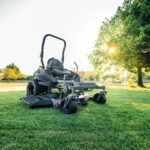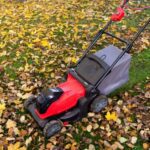How to Find an Underground Spring on Your Property? You can live more sustainably and meet your needs by making use of what you already have in your home. A wellspring of drinkable water, an underground spring is one such secret fortune. A reasonable water supply for your home and the opportunity to build the biodiversity of your property are two expected advantages of finding an underground spring, which can be both a thrilling and viable occasion.
Utilizing this nitty gritty aide, you might track down an underground spring on your own property. Let’s read below about “How to Find an Underground Spring on Your Property?”
Table of Contents
Understanding the Basics
Learning the most common way of spring development is the most vital phase in finding an underground spring. A spring is the normal cycle by which underground water is brought to the surface. These happen when an impermeable hindrance, such stone or dirt, keeps water from streaming downhill and on second thought permits it to rise and escape through breaks in the ground. There are various sorts of springs, including artesian, gravity, and drainage springs. Acquiring knowledge of these distinctions can work with the recognizing methodology.
How to Find an Underground Spring on Your Property
Researching Local Geography and Hydrogeology
Get to know pretty much everything there is to know about the area’s hydrogeology and geology before you contemplate digging. Utilizing hydrological studies, geographical maps, and geological surveys, hydrologists can gain a deeper understanding of aquifers, subterranean waterways, and potential spring sites. To find out about the land’s geography and work on your possibilities finding a spring, you ought to counsel hydrogeologists or nearby ecological gatherings.
Observing Surface Water Patterns
There are great signs of underground springs in surface water designs. Be exceptionally cautious during dry periods to keep away from districts where water accumulates or streams oftentimes on a superficial level. Wet spots made conceivable by springs’ consistent progression of water are ideal for vegetation. Search for these signs in the water’s surface; they can lead you to springs.
Monitoring Changes in Vegetation
The presence of vegetation is a certain indication of underground water sources. Be mindful so as to record any sort of verdant plants or vegetation that appear to be flourishing in the flows. An unexpected change in the thickness of vegetation or the presence of water-cherishing plants like cattails can demonstrate the presence of an underground spring.
Techniques for Locating Underground Springs
How to Find Subterranean Fountains To find the subsurface spring on your property, you must first collect basic data and look for surface indicators. Then, there are specific strategies that can be utilized.
Divining or Dowsing
Utilizing dowsing bars or pendulums, an old act of divination called “dowsing,” one could find subsurface water supplies. Certain individuals actually think divination is useful, in any event, when they don’t have faith in its logical establishment. On the off chance that you put the instruments over a potential spring, they will point or move because of the presence of water, so the professionals say. To utilize this system, you should initially produce or buy divination devices and scour your space for indications of something going on under the surface.
Soil and Geomorphological Characteristics
One method for finding out where the springs are on your property is to take a gander at the dirt sort and the overall territory. Sandier soils permit water to percolate more readily than clayier ones. There must be more prominent examination concerning soils that are sandier or more permeable since these qualities can propose the presence of water subterranean. Look out for any dunks or low spots in the ground; these can be indications of water collecting.
Groundwater Mapping and Monitoring
Current water investigation depends vigorously on innovation. Geophysical methods, including ground-infiltrating radar (GPR), can reveal insight into conceivable water pathways and springs, considering the production of exact subsurface guides. It very well may be shrewd to look for the exhortation of a specialist as these methodologies require specific instruments and information. Wells or piezometers that continually measure groundwater levels can likewise give ideal information.
Conducting Percussion or Auger Testing
The percussion test includes driving a bar or line into the earth and afterward tuning in for any clamors; It is one way to locate water. Notwithstanding, drill testing requires setting your hands dirty up to decide soil dampness levels and accumulate tests. By uncovering districts with surface-level groundwater, the two techniques can support the disclosure of potential springs.
Practical Considerations and Safety Measures
Realistic Considerations and Safety Measures Before you begin your search for an underground spring on your property, check to see that you are fully protected and have thoroughly considered all potential dangers.
Surveying Legal and Regulatory Requirements
It is important that you research neighborhood regulations and get all necessary grants prior to starting any exploratory activities. A few areas have guidelines on removing groundwater, and there are specific proposals for how to do as such. You must strictly adhere to these standards to avoid legal trouble.
Safety Precautions during Excavation
Follow all applicable wellbeing methodology assuming your investigation requires digging. Before you begin digging or boring, be certain you comprehend how to use the apparatuses and hardware. Assuming you work in or close to an exhumed region, you want to play it safe and utilize defensive stuff to keep away from hurt.
Consulting with Experts
Advice from Experts in the Field If you’re having trouble understanding terms used in geology or hydrogeology, seek the advice of an expert. Specialists in topography, hydrogeology, or water assets can assist you with refining your pursuit and eliminate any misconception by giving their shrewd conclusions.
Conclusion
Finding an underground spring or other manageable water source on one’s own property can be a remunerating experience. Your possibilities finding an underground spring will rise in the event that you properly investigate things, give close consideration, and investigate with a concentrated outlook.
Take as much time as necessary and be cautious as you follow the stages. Whether you favor outdated procedures like divination or state of the art devices like ground-infiltrating radar, the interesting excursion of finding an underground spring will open you to the strong powers of nature at work underneath your property. I hope you like reading “How to Find an Underground Spring on Your Property?”

Barry, the expert behind LawnInspection.com, holds a Master’s degree in Horticulture and brings over 20+ years of hands-on experience in landscaping and lawn care. With certifications in sustainable lawn management, Barry is dedicated to providing readers with authoritative insights and practical tips for maintaining lush, healthy lawns. His extensive knowledge and commitment to excellence ensure that every piece of advice on LawnInspection.com helps transform your lawn into a green oasis with proven, eco-friendly practices. Connect with Barry on social media: Instagram and Facebook.








